The Box and Goodies -
As you might expect with an entry level product the packaging and accessories that ship with the A55M-DS2 reflect the lower retail price. Now that does not mean that the marketing guys have not had their way with the box. Looking at the front it actually looks like they might have put in some overtime to make sure that every feature that the A55M-DS2 has to offer is listed somewhere on the box. The front of the box has a nice list of items that make the A55M-DS2 stand out. 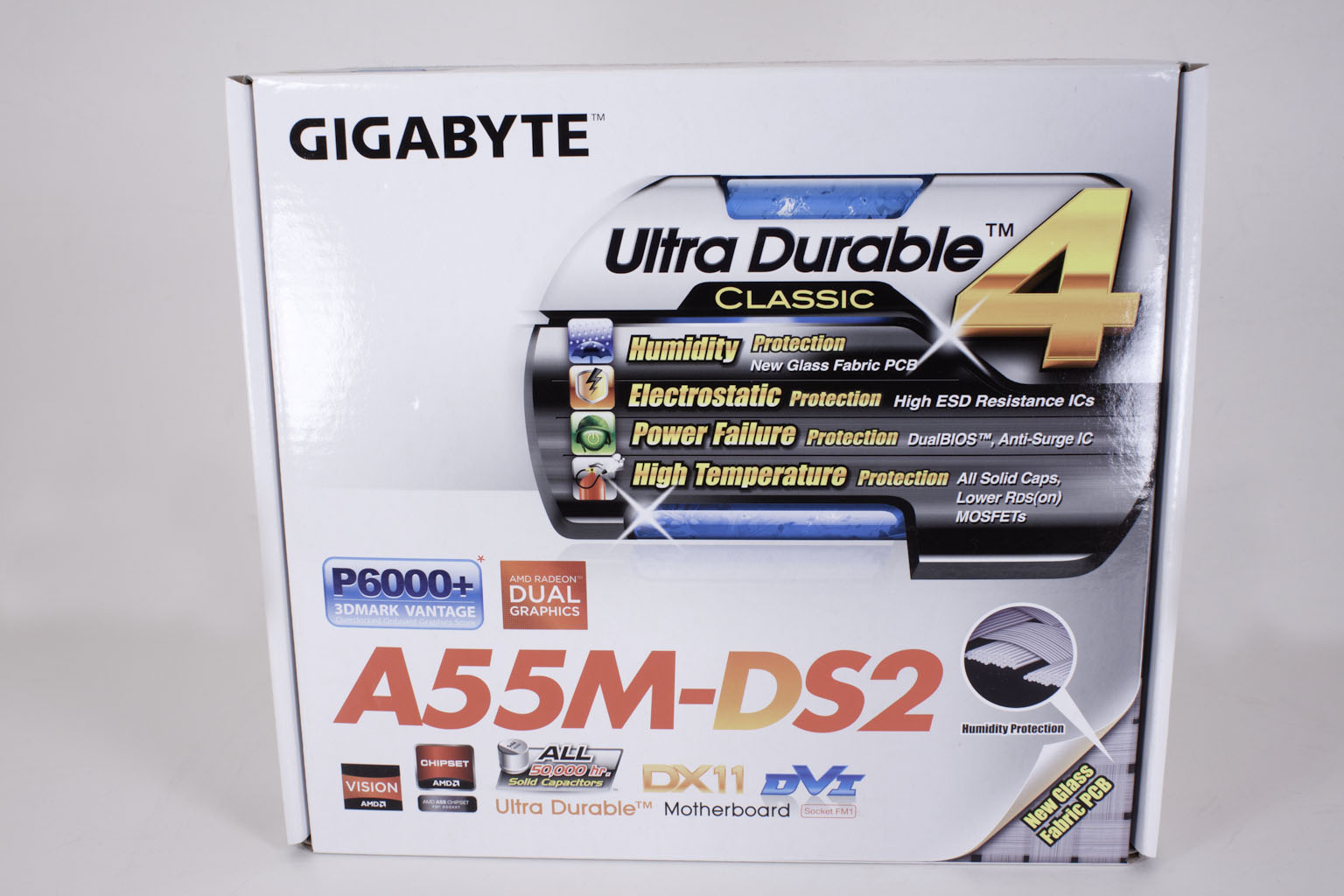
All of these features are very much geared toward a system that needs to run on a 24/7 basis. These are things like humidity protection from a new PCB material, ESD (Electrostatic Discharge) protection, Anti-Surge protections and high heat protection. With this list it looks like Gigabyte is expecting you to stuff this into a tiny little case, turn the power on and go.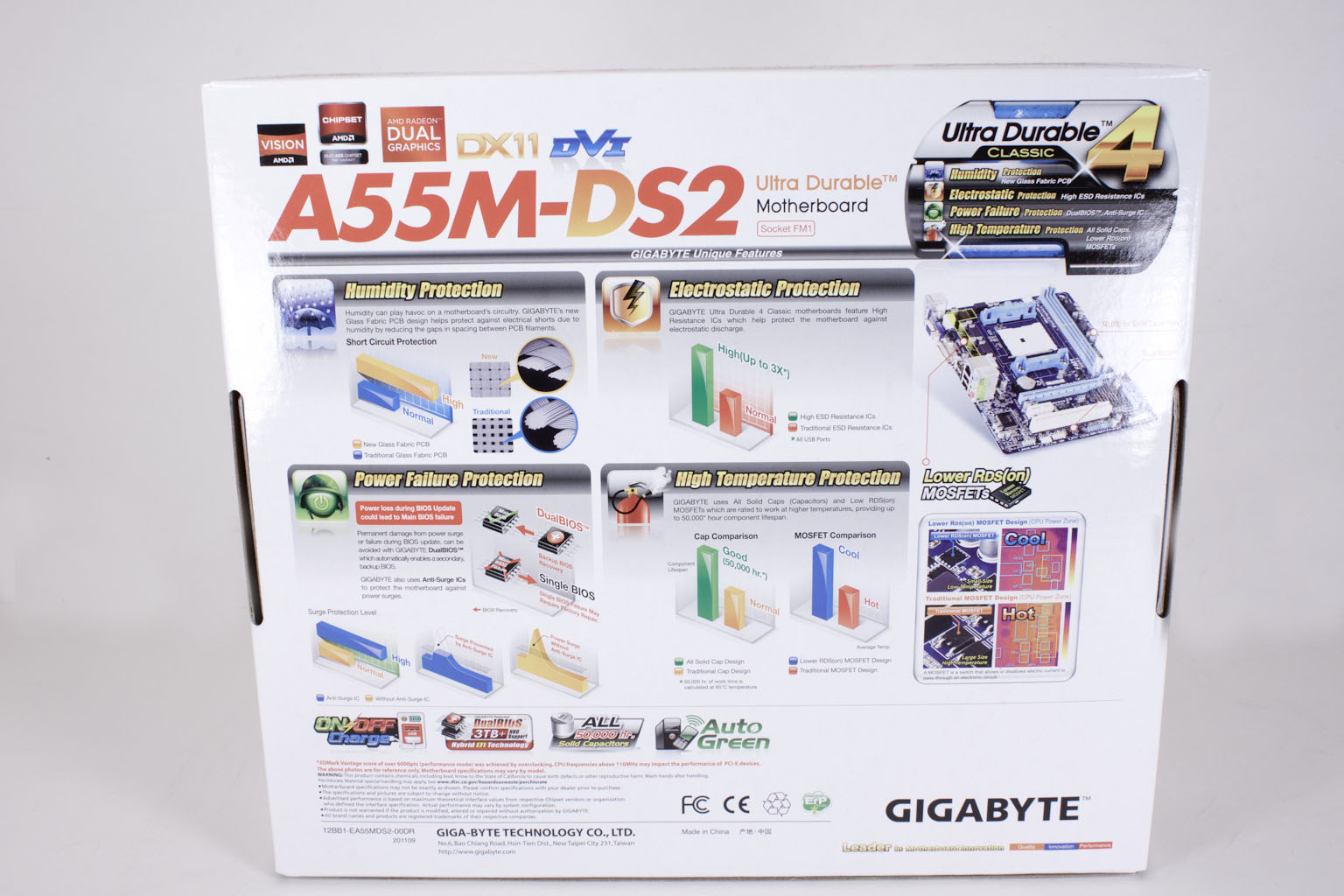
The back of the box takes these items and expands on them to make sure that the importance of these features is not lost on the consumer. You also get a few other features thrown in for good measure. Once you do get the A55M-DS2 home you might be a little disappointed by what is inside the box. You only get an installation DVD, a manual, two SATA cables and an I/O shield. Like we said not much, but then again this is meant as an entry level product and has a price to match the level of accessories in the box.
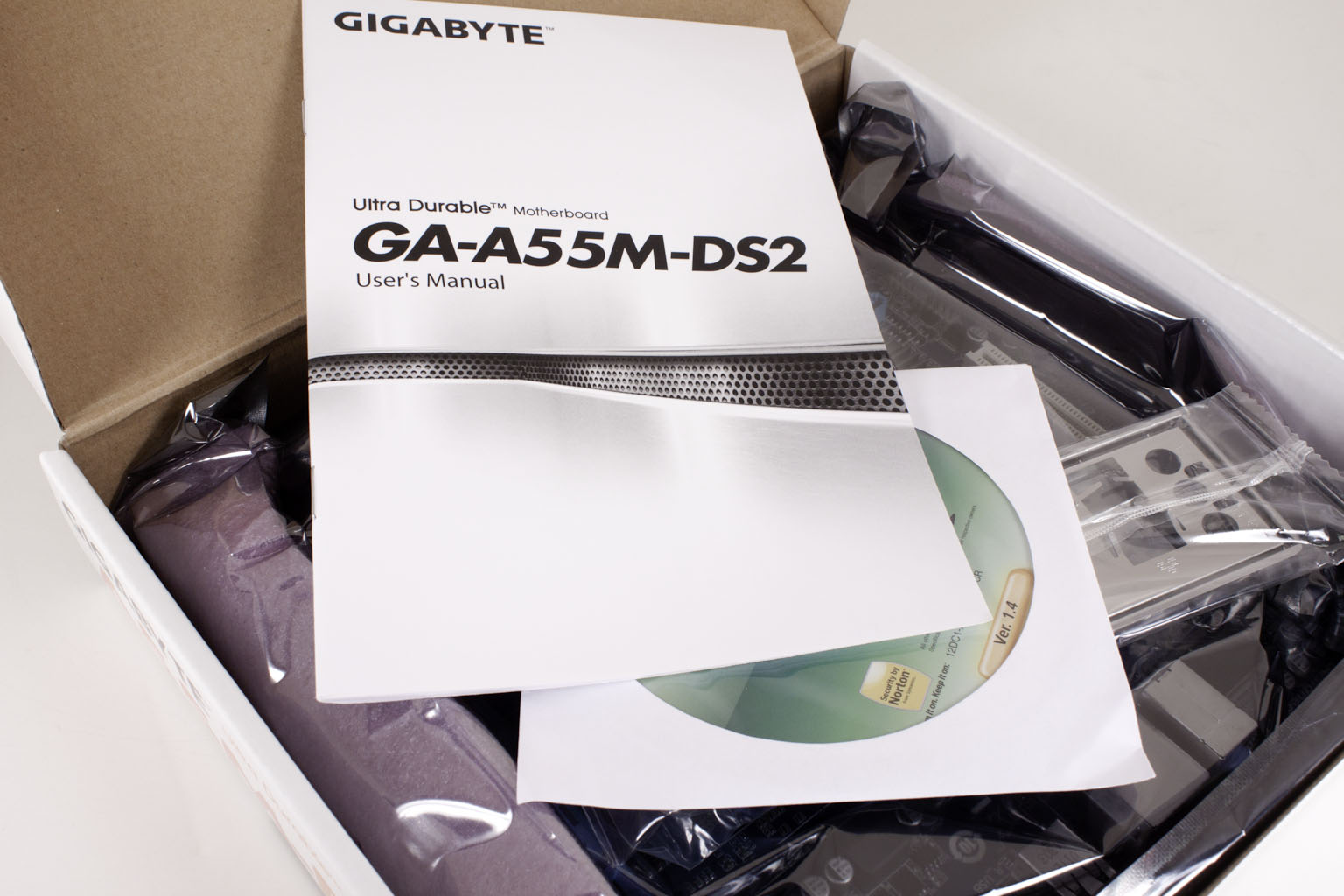 |
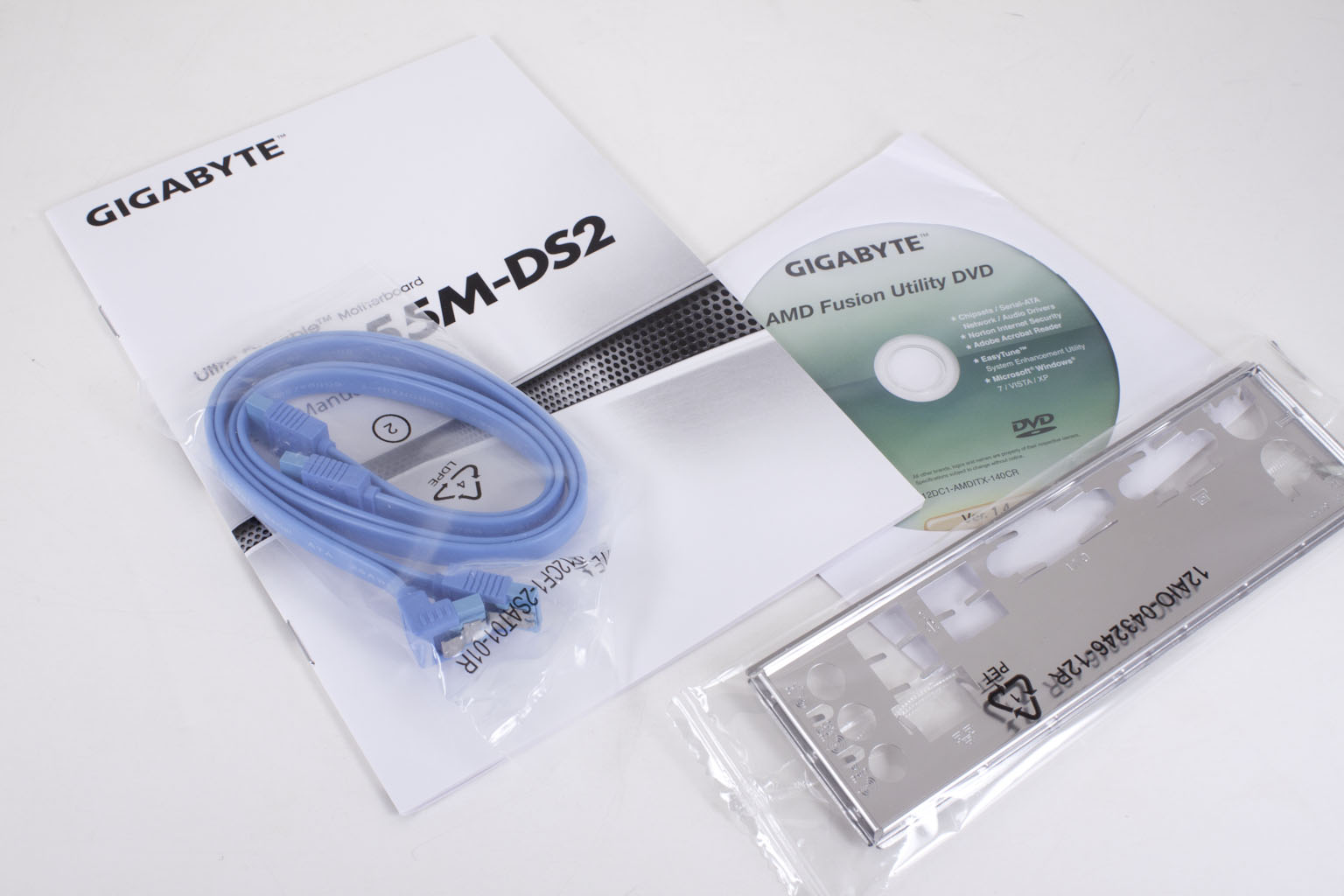 |
The Layout -
The layout of any motherboard is important. Even simple mistakes in component placement or the signal traces can cause major issued in performance and stability. With the ATX form factor we find that this is even truer; the devices we drop onto them demand more and cleaner power while the signal speeds push faster and faster. The Gigabyte A55M-DS2 is listed as a Micro-ATX board but it has some odd dimensions for one. Typically a Micros ATX board is a square between 6.57 and 9.6 inches on each side. The Gigabyte A55M-DS2 measures 8.86 x 6.85 inches. It makes it look like a shrunken ATX board to be honest. 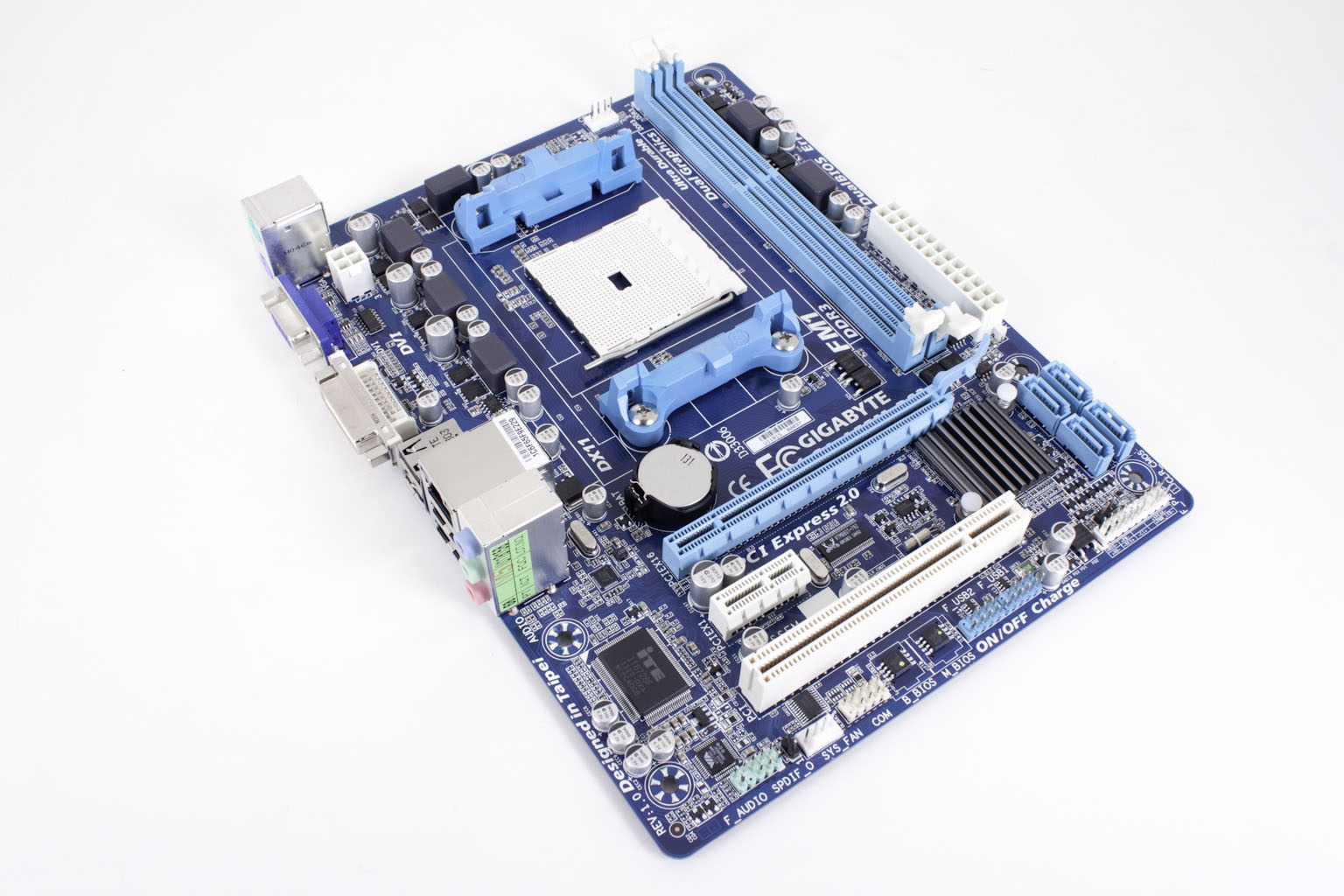
The largest visible feature of the A55M-DS2 is the FM1 socket and the new open fan mounts. This pretty much dominates the board. Still they say you should always start at the beginning so let’s kick off our walk around at the normal spot. As with most Micro ATX motherboards the A55M-DS2 has two slots for memory these sit close to the 24-Pin ATX power connector. Taking a closer look at the FM1 socket again we see that the area around it is very clean. We can also see that Gigabyte did some work on making sure the traces were tuned properly from the CPU socket to the memory slots and also to the rest of the board. The A55M-DS2 is also not a terribly power hungry product and only requires an extra 4-pin power connector to make sure you have enough power to run the CPU. You can also see that there is no heatsink on the board for the power regulation. This could be a good or bad sign especially considering that this board appears to be intended to run 24/7.
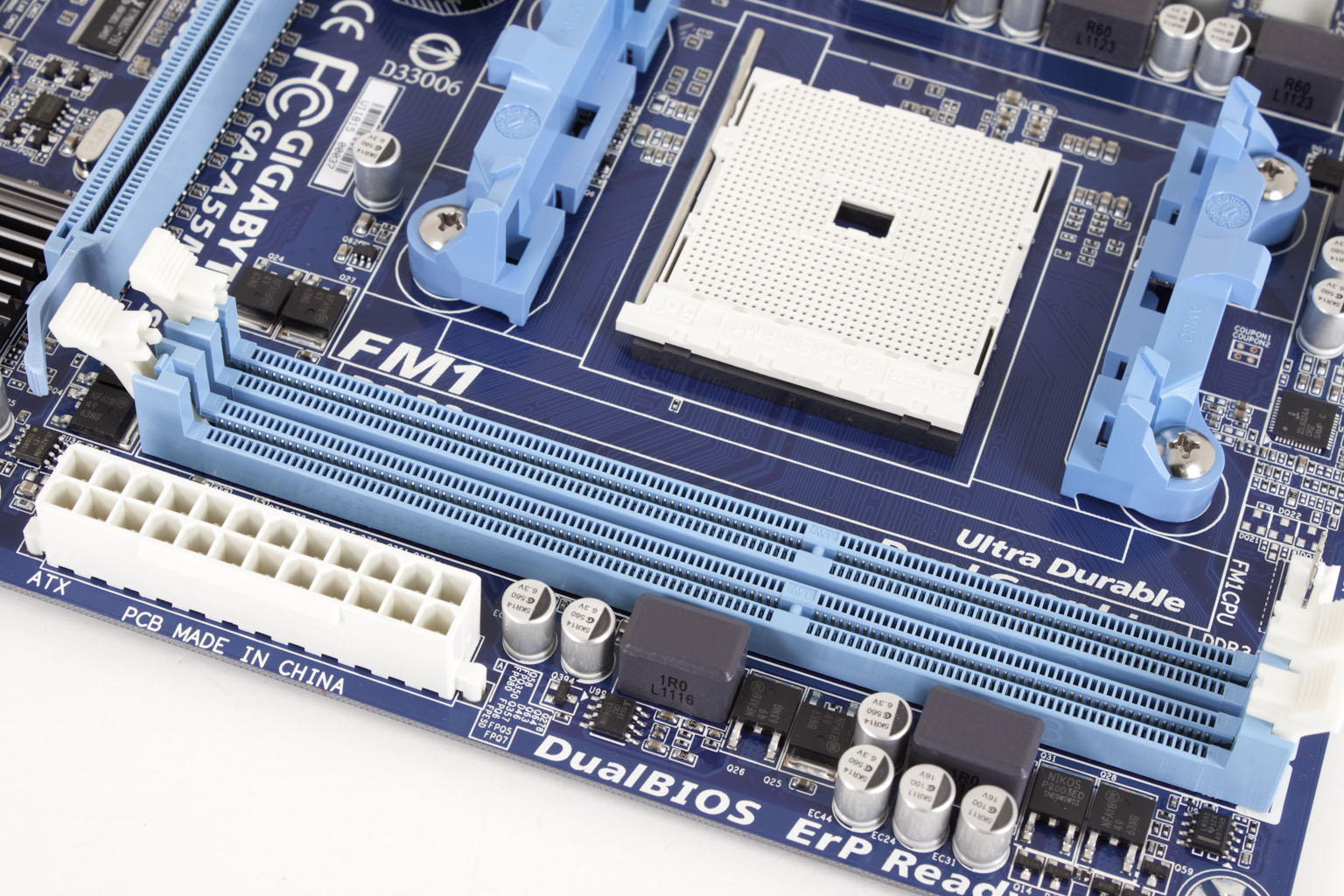 |
 |
For expansion Gigabyte gives you a single x16 PCIe 2.0 port along with an x1 slot and a standard PCI slot. Not much in the realm of expansion potential, but much better than nothing. The A55M-DS2 only comes with four SATA 2.0 ports, but in an entry level system this really should be more than enough even if you decide to try out the onboard RAID.
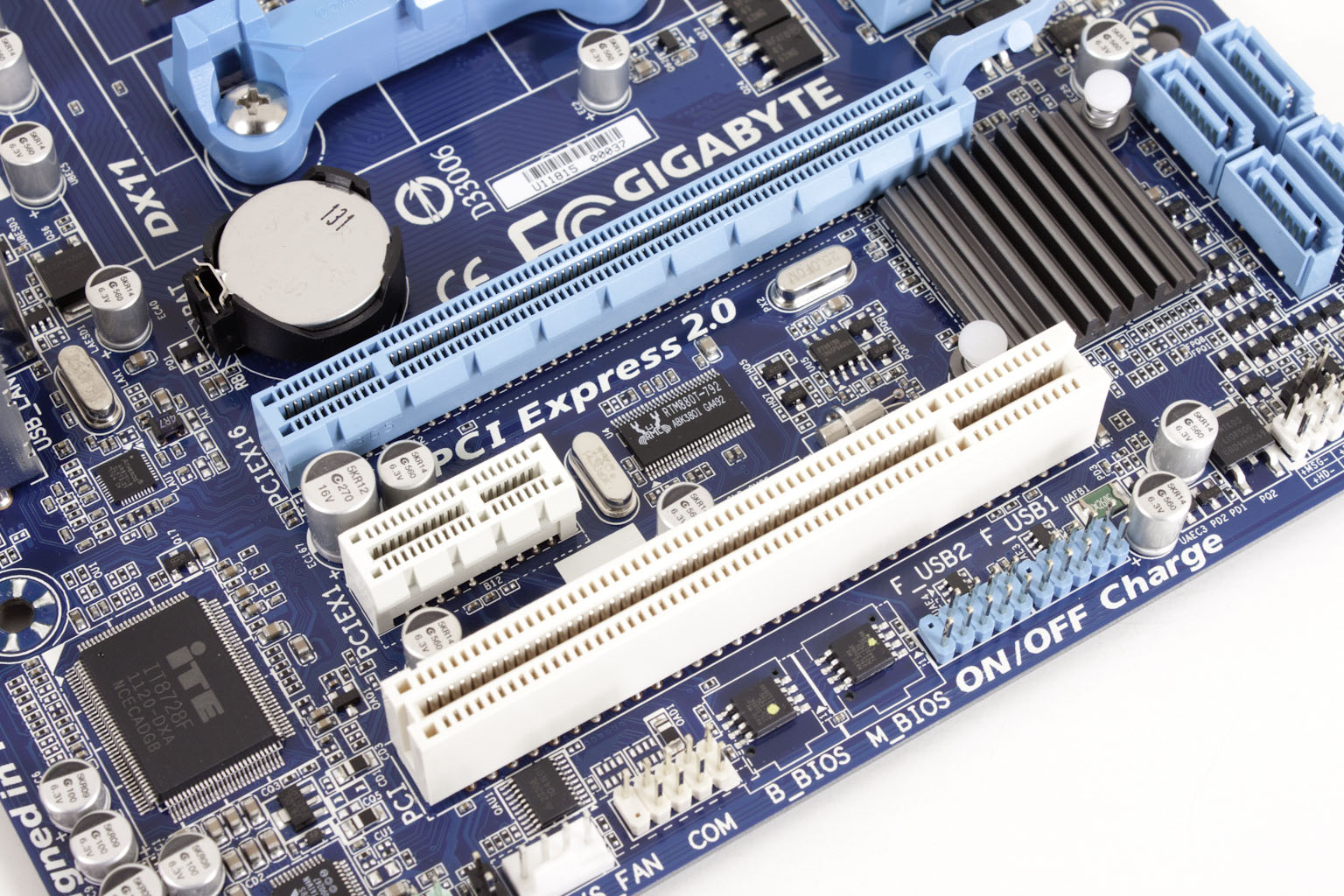 |
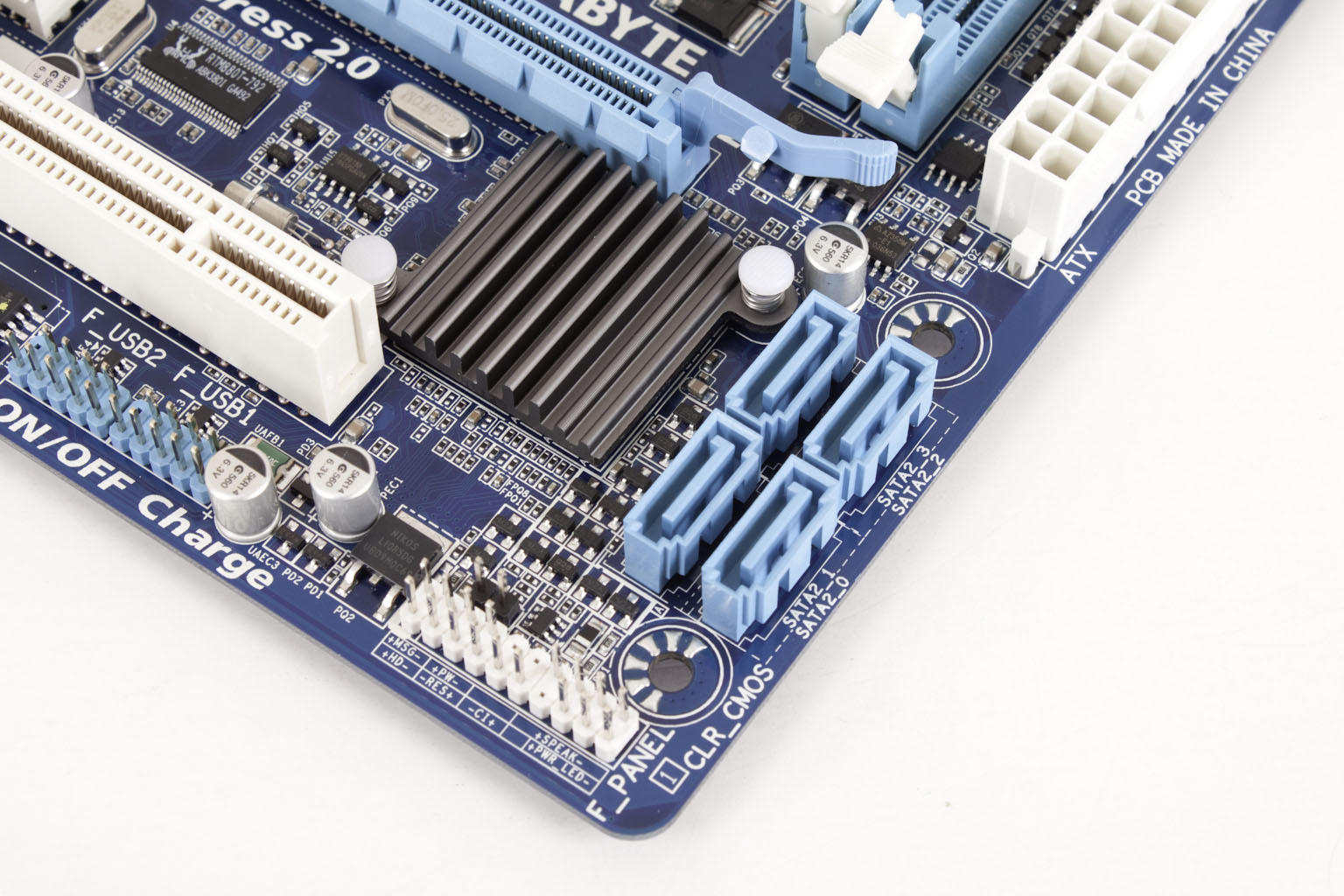 |
Moving around to the back we find a very stripped down I/O panel. Normally even on the lower end we see AMD offering HDMI or at the very least Display Port. However on the Gigabyte we find only DVI-I and VGA. Also conspicuously missing are the USB 3.0 ports and 8 channel surround sound. Instead we only have four USB 2.0 ports (plus two additional headers on the board) and possibly 6 channel surround.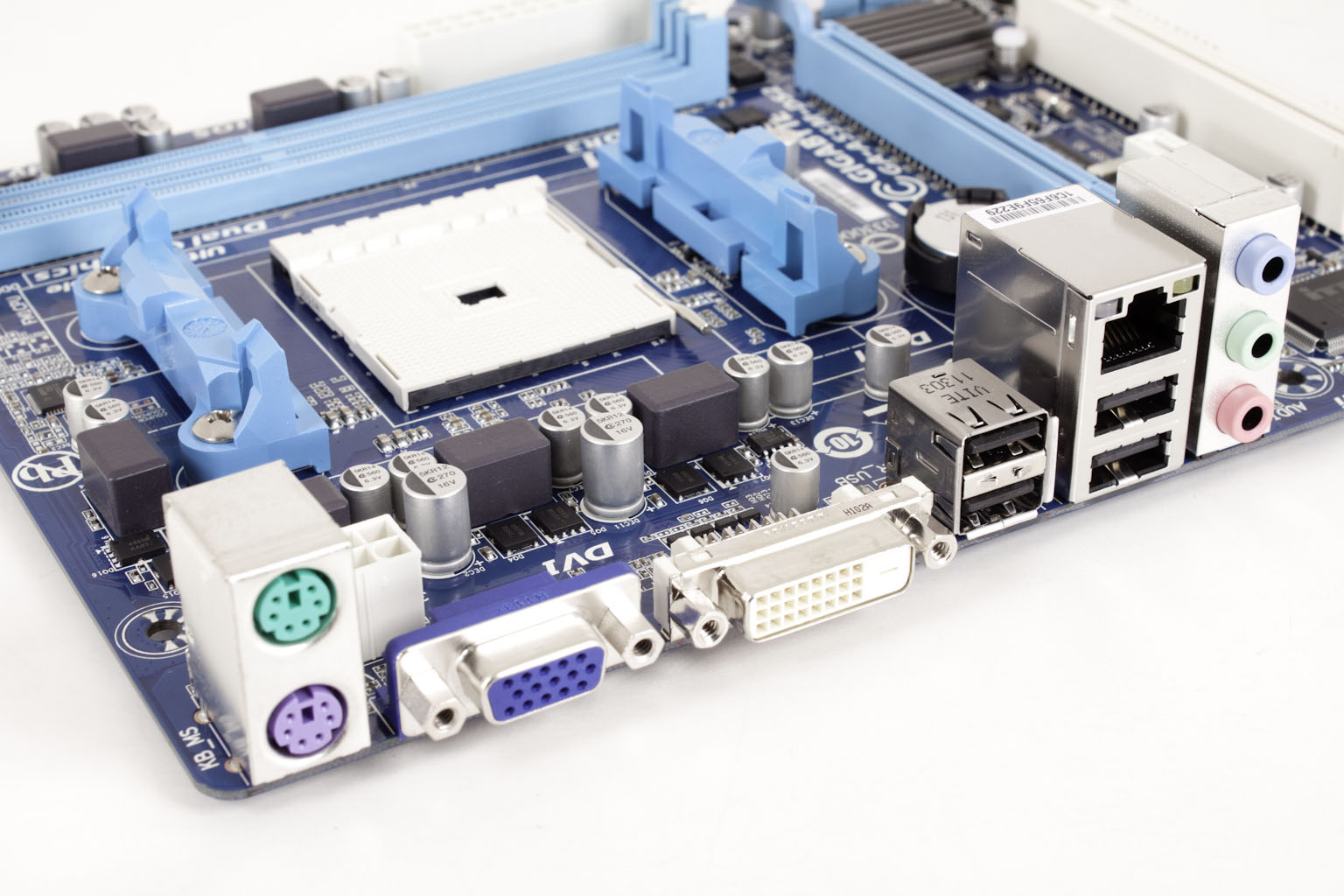
Overall the board has a nice design, but has left us wondering exactly where it fits into the market.
Features -
In the current market motherboard (and indeed almost all components) performance is very close. The days of a large performance advantage between boards using the same chipset are long gone. That is unless someone makes a HUGE mistake (like runs traces completely wrong). Now, the thing that differentiates different products is the features. These are things like power management, extra slots, better audio CODECs etc. It is these items that R&D teams work so hard to drop into what are really identical pieces of hardware at their most basic level.
Excellent -
Humidity Protection
High Temperature Protection
DX11 Support
These three are probably the best out of the listed feature set. Both offer good product life and can protect the board from the stress that comes from being shoved into a small case with not a lot of cooling. Meanwhile DX11 support at this price range is something unheard of.
In the middle (sort of good) -
Dual BIOS
ESD Protection
EasyTune6
3-TB Drive support
These items, while common in more expensive motherboards from Gigabyte are not typical on an entry level product. Still they are not going to be the reason you chose the A55M-DS2 over another product.
Floor Mats -
Auto Green
ON/OFF Charge
These last two are simply dressing. Granted we can see where On/Off charge might be interesting to some consumers as almost all cell phones can be charged via USB. By using On/Off Charge you can keep your devices going without the need to turn on your system.
BIOS -
BIOS is an acronym that stands for Basic Input/Output System. It is meant to control your product at a very low level. As of right now there are three regularly used BIOS formats (there are actually more than that but there are three common ones). These are the AMI (American Megatrends Incorporated), Award, and Phoenix. The Gigabyte A55M-DS2 falls back to the old style of BIOSes. Instead of the newer UEFI (Unified Extensible Firmware Interface) you get the traditional blue and white “plain text” flavor of BIOS. It is still more than functional, but it does not have the same flare that the newer BIOSes do.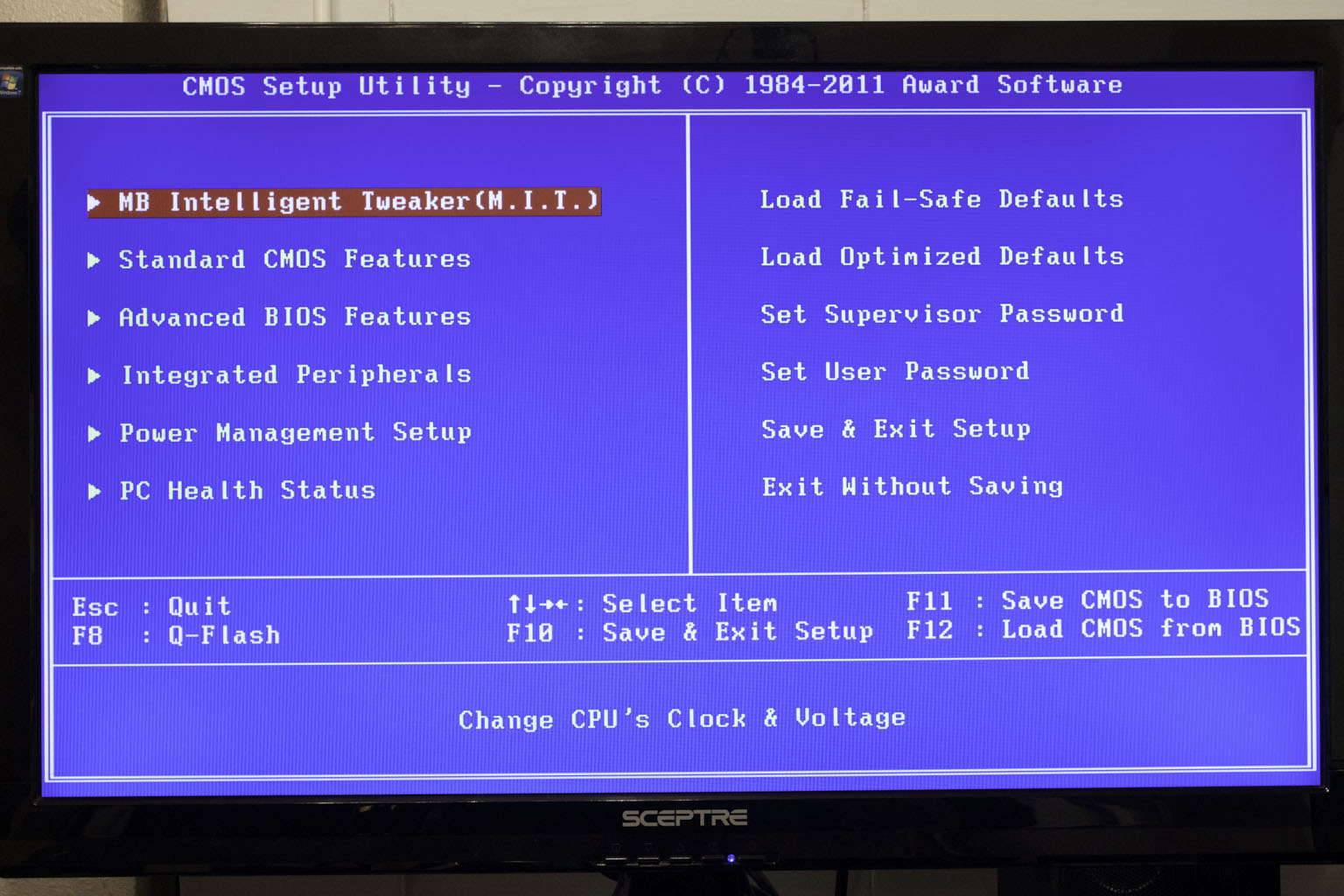
As you can see the BIOS layout is pretty much what you would expect from a Gigabyte motherboard.
There is not much new to talk about from this end, but we will cover some of the highlights. As usual the M.I.T. pages are well laid out and keep to the clean and simple.
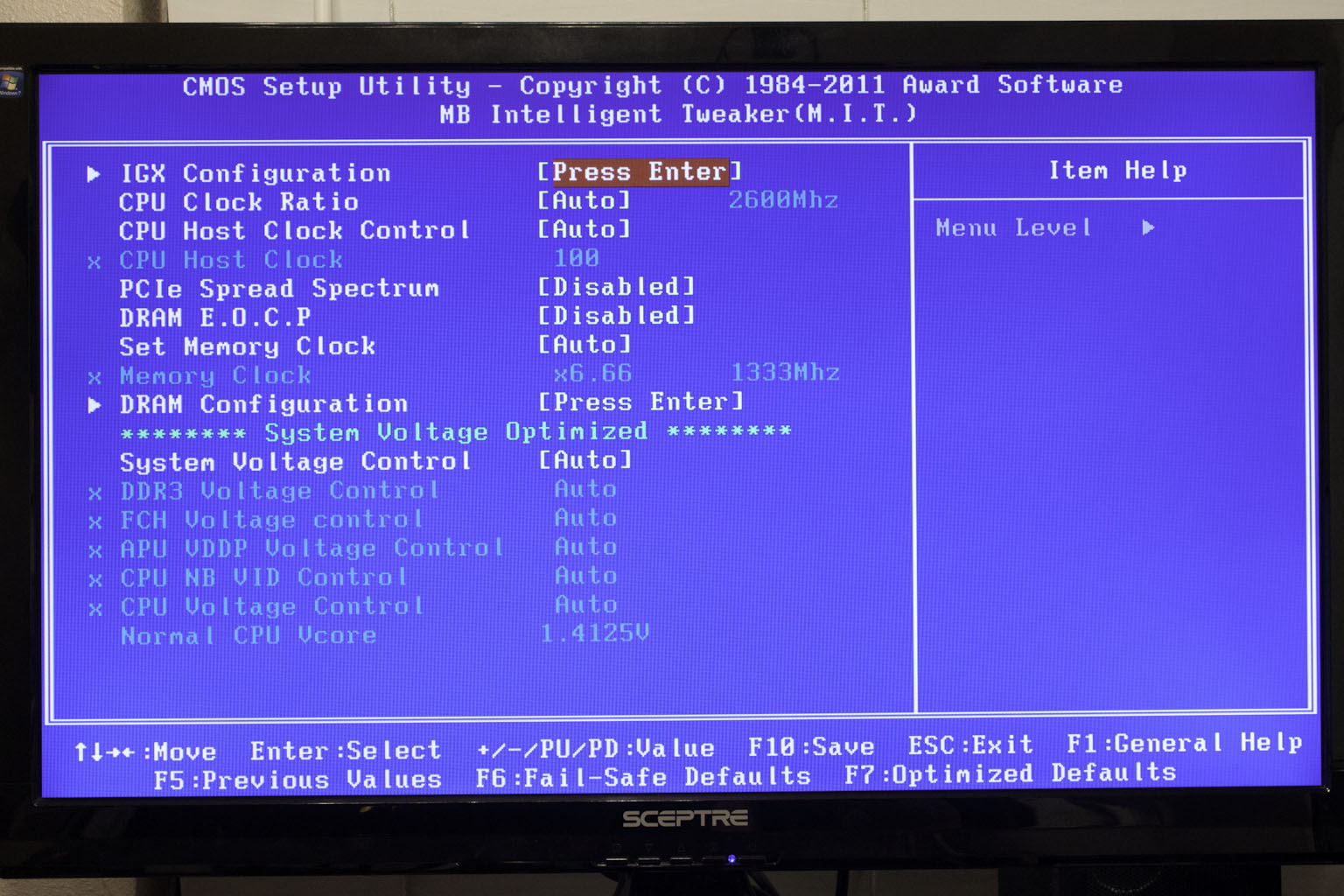 |
 |
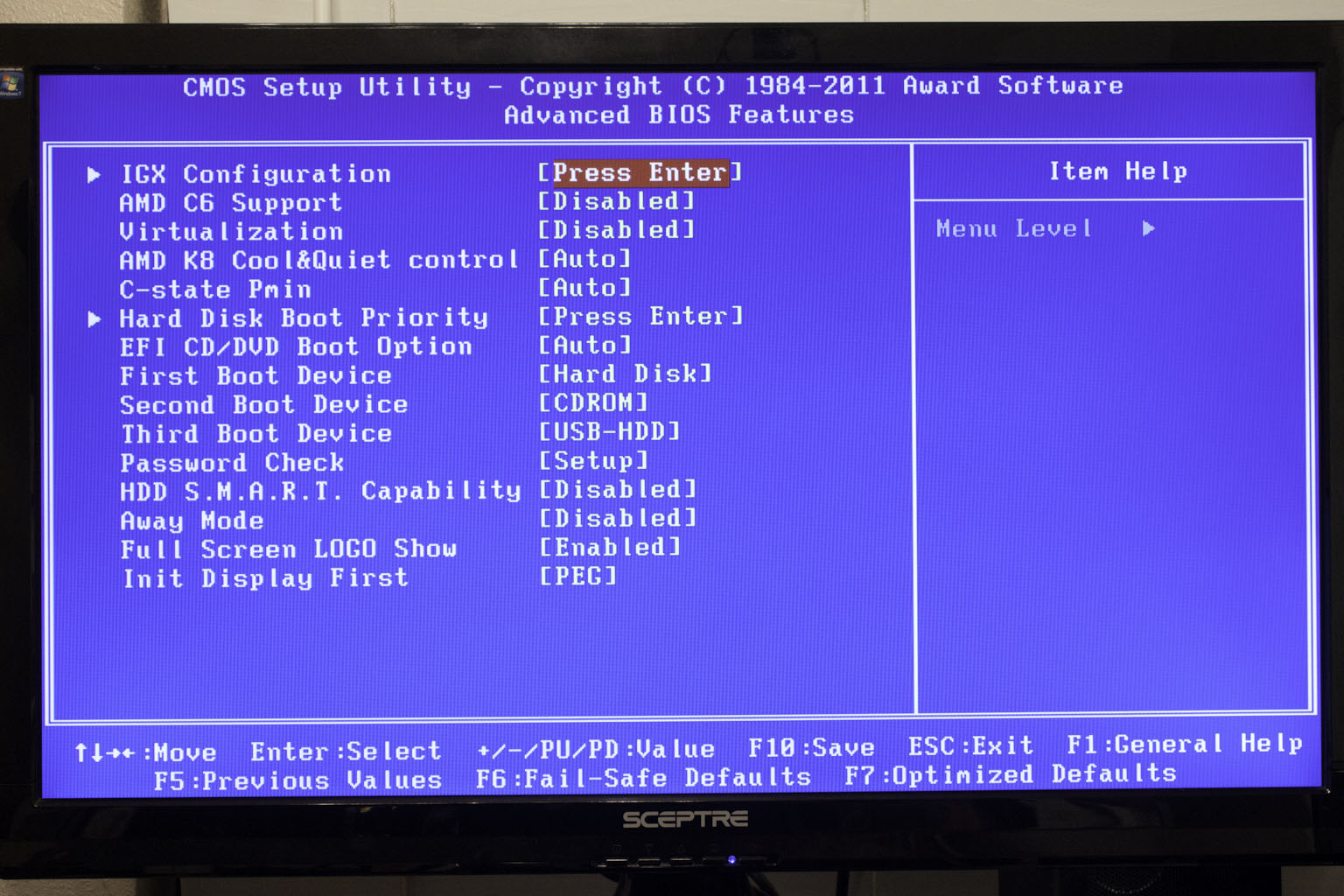 |
The rest of the BIOS falls into familiar categories like the Advanced BIOS features, Integrated Peripherals, etc. There really is not much to talk about here.
 |
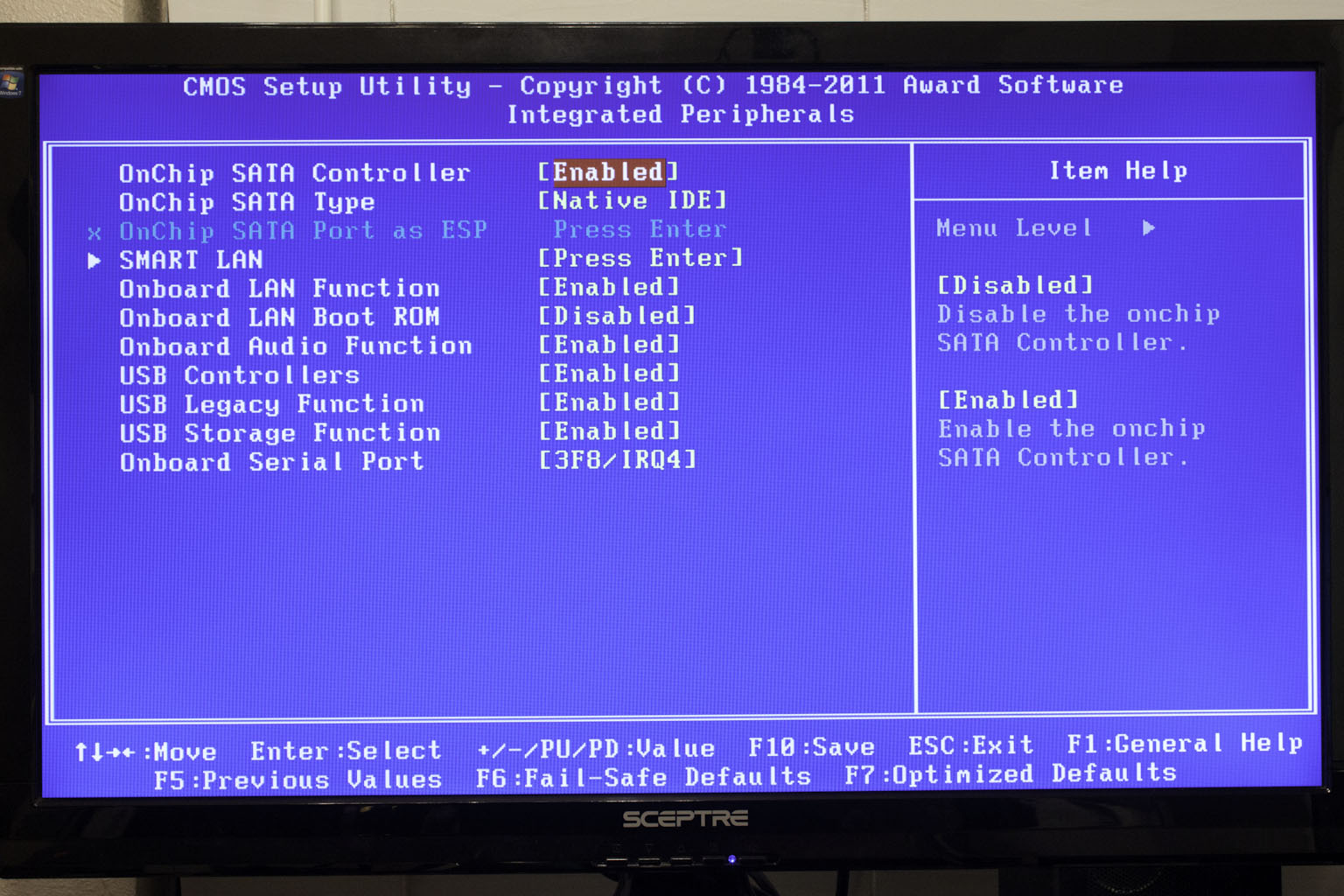 |
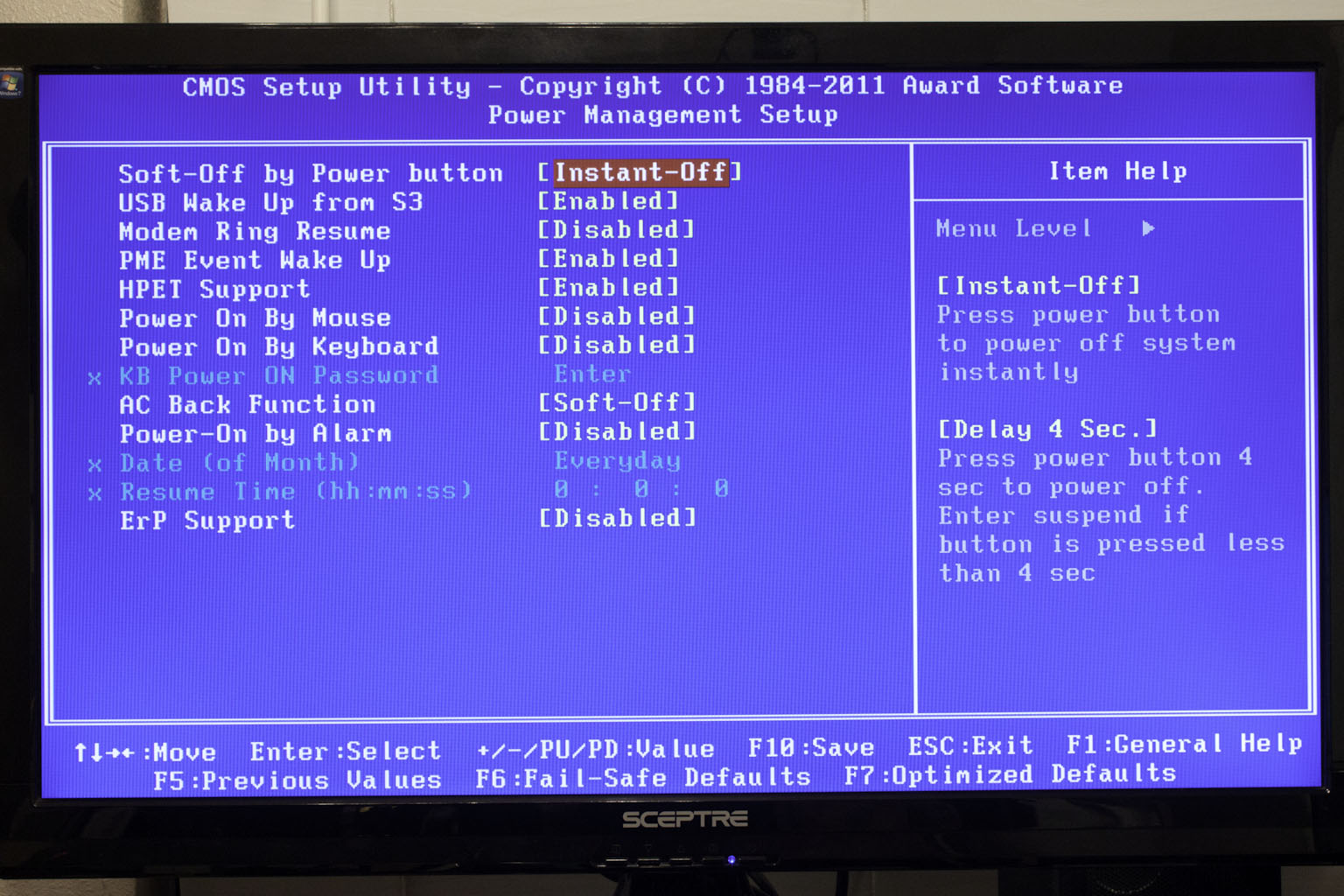 |
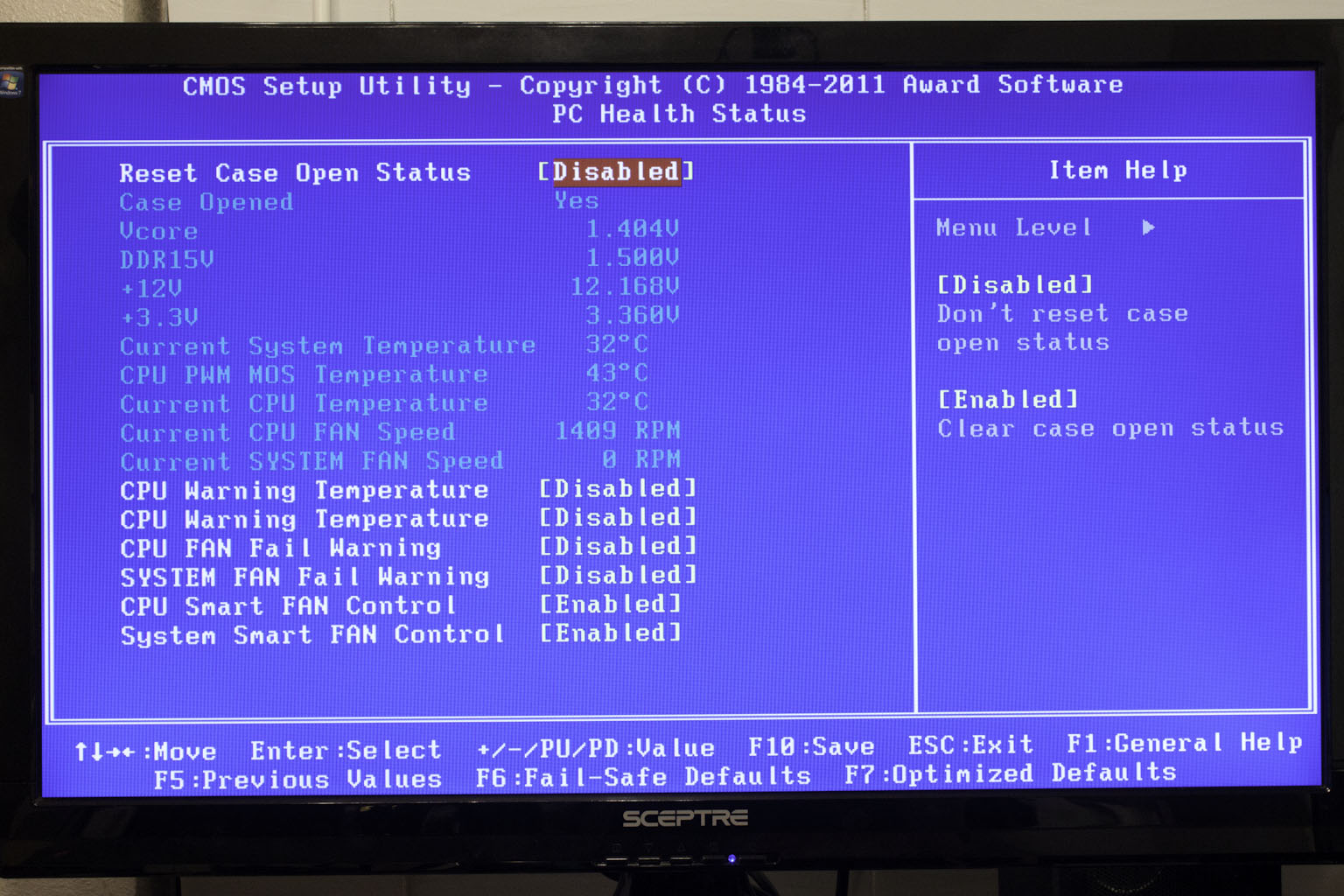
Conclusion Part I
I have to say that at this stage of the review I am walking away with some mixed feelings. The feature set would seem to indicate that the Gigabyte A55M-DS2 is a board intended to be used in an “always-on” style DVR or HTPC system. However, the lack of a heat sink over the power regulation makes me concerned for the longevity of this board if you chose the wrong case. Other items that are missing (if this is indeed an HTPC board) are HDMI (or Display Port), and a better audio CODEC. We have to wonder just where A55M-DS2 really does fit into the market as right now our best guess is at the very entry level as a basic desktop system. We hope that the performance testing will shed some light on where the A55M-DS2 belongs, or at least where it is best suited.
Discuss this in our Forum



